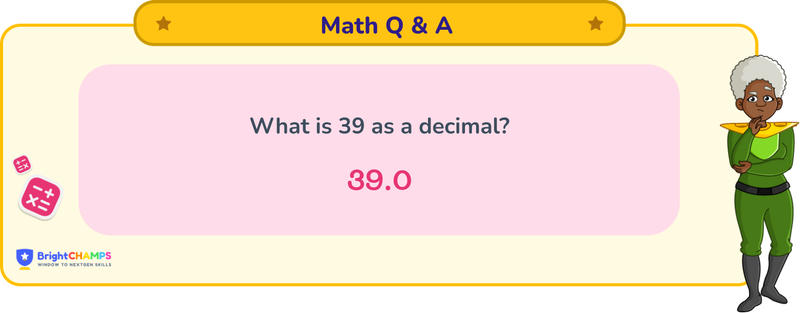Summarize this article:
 326 Learners
326 LearnersLast updated on August 5, 2025
39 as a Decimal

It is a simple question on decimal conversion. Firstly, we need to understand whole numbers and decimals. A whole number is a complete entity without fractions or decimals. On the other hand, a decimal is a way of representing numbers that are not whole, using a decimal point (.) to separate the whole part from the fractional part. The numbers to the left of the decimal point represent the whole number, while those to the right represent the fractional part.

What is 39 as a decimal?
 Answer
Answer
39 as a decimal is written as 39.0. It is a terminating decimal as it does not have any digits following the decimal point.
Explanation
To convert 39 to a decimal, we consider the fact that it is already a whole number. In decimal notation, whole numbers are followed by a decimal point and a zero in the fractional part, thus making it 39.0.
Step 1: Recognize that 39 is a whole number.
Step 2: In decimal representation, add a decimal point followed by a zero to show there are no fractional parts.
Step 3: The final representation of 39 as a decimal is 39.0.

Important Glossaries for 39 as a decimal
- Whole Number: A number without fractions; an integer.
- Decimal: A number that uses the base ten and includes a decimal point to separate the whole part from the fractional part.
- Terminating Decimal: A decimal that ends and does not repeat infinitely.
- Decimal Point: The dot used to separate the whole part of a number from the fractional part in a decimal number.
- Fractional Part: The part of a decimal number that comes after the decimal point.





